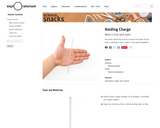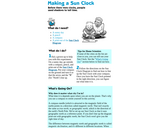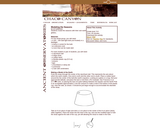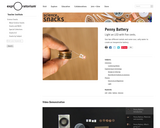
In this activity, students make a record player out of simple materials and investigate how sound is produced from vibrations.
- Subject:
- Science
- Material Type:
- Activity/Lab
- Provider:
- Exploratorium
- Date Added:
- 09/08/2017

In this activity, students make a record player out of simple materials and investigate how sound is produced from vibrations.

In this activity, students use differently weighted cola cans to reflect the force of gravity on other planets (and the moon).

In this activity, students measure the amount of carbon dioxide in a carbonated drink. They will work in teams of at least two to extract, collect, and measure gas (volume) from a can or bottle of cola. Students can also compare the volume of gas to the mass loss and determine the molarity of the CO2 in the cola.

In this activity, students use a straw to investigate static electricity.

In this activity, students model hot spot island formation, orientation, and progression with condiments.

This informational poster details how proteins make muscles work.

In this activity, students investigate the speed of chemical reactions with light sticks. Reactions can be sped up or slowed down due to temperature changes.

In this activity, students investigate convection by using food coloring and water of different temperatures.

In this activity, students investigate the speed of sound.

Students will create a sun clock out of simple items in order to tell time by the movement of shadows throughout the day.

In this lesson, students use colored candy to represent subatomic particles and make a model of an atom (Bohr model). This helps with student understanding of the sub-atomic components of an atom as well as nuclear notation of the periodic table.

In this activity, students will investigate rocks and then use their descriptive data to match with another student.

Students will model the seasons by creating thier own Earth globes.

This resource describes and illustrates the varieties of mutations that are commonly seen in Drosophila fruit flies.

In this activity, students organize fasteners by their properties in order to better understand the basis of the arrangement of the periodic table of elements.

In this activity, students use two different metals and some sour, salty water to create an inexpensive battery.

In this activity, students create a 3-D way to visualize trends on the periodic table. By using straws (or other objects) they will show how the various properties of elements are used to organize elements on the table.

Students will explore how the eye and brain work together to retain an image.

In this activity, students make a pinhole camera to investigate light and optics.

In this activity, students investigate and demonstrate physical change by using heat to separate zinc and copper in a penny. This acitvity pairs well with the activity "Chemical Change - Pennies."